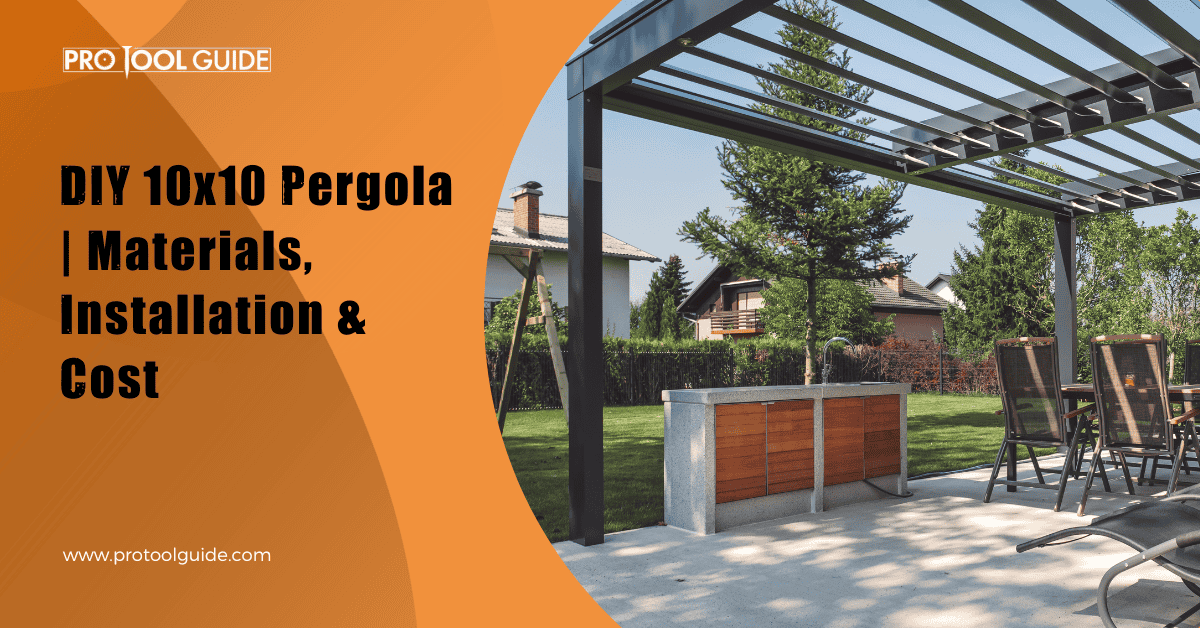You want to move your outdoor space from regular to exceptional by adding a pergola, but you have a lot of doubts about the process. You should know this is normal, and a lot of people do know anything about setting one up in their backyard.
Pergola is a simple yet elegant-looking structure that immediately transforms a space. Although predominantly made from wood, a pergola can also be set up with different materials like PVC and metal, among other things. It is less about the material used and more about the style and purpose.
A pergola is a structure that forms a slightly shaded area in your garden. The four sides of the pergola are without walls, while the top is slightly open. This simple structure can be replicated by anyone with a little technical knowledge as long as they follow a clear process. However, it is quite the challenge to find this process that enables even beginner DIY enthusiasts to replicate comfortably.
People with basic woodworking experience using machines like a spindle molder will find making pergolas quite easy. Nevertheless, you shouldn’t be discouraged if you’ve had no prior experience with these machines, as this is a simple-to-follow process.
The missing piece is what this guide seeks to plug by providing a complete series of information you need to go from knowing nothing about pergolas to having a befitting pergola grace your backyard.
Pergola Materials
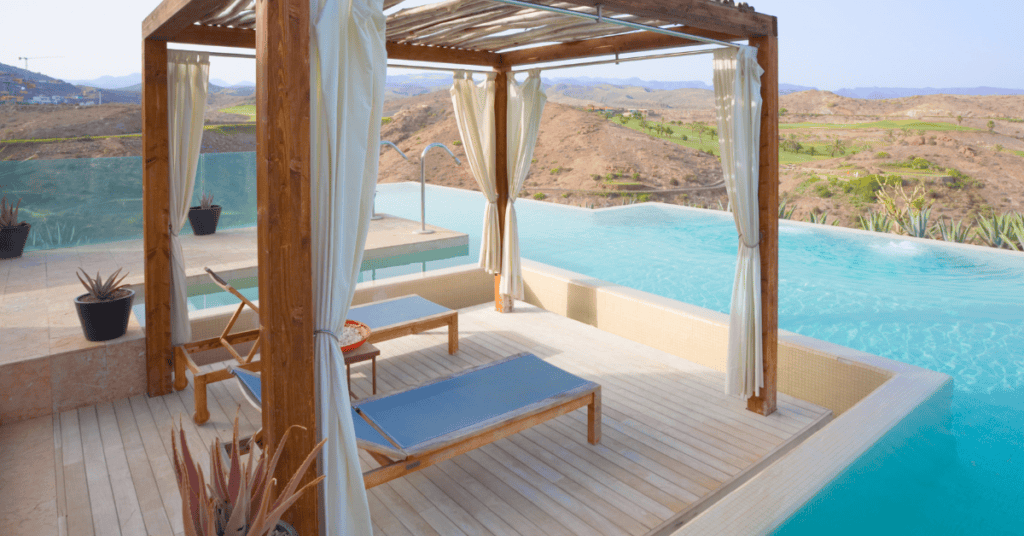
There are so many materials you can use to make a pergola. These materials can be used solely or combined with others to great effect. The choice rests solely on the feet of the owner and their needs. To build a 10×10 pergola structure, you need materials; here are some common materials for making pergolas:
1. Wood
By far the most common material for making pergola. The aesthetic appeal wood brings to your backyard is unrivaled, seeing that you can furnish the wood in different ways, including pressure treating and painting. Wood, although functional, is prone to degradation by the effect of the weather on them. They would require regular maintenance like wood distressing to keep enjoying your pergola.
2. PVC
PVC may be less popular than wood, but it represents a weather friendlier version than wood. You also do not need a lot of maintenance to keep this in good shape; however, you may struggle to make a classy feel out of it.
3. Metal
This sturdy material can last for a long time and would require little to no maintenance, especially when you use a galvanized metal that prevents rust. It is a cheaper alternative to timber but can make the area hot as metal holds heat.
4. Bricks
You can use bricks to make the frame of the pergola. With bricks, you have the option of customizing the color into something more exciting while enjoying a structure that can stand the test of time with little maintenance. However, you may struggle to do this as a DIY project without a solid experience as a builder.
5. Aluminum
There is no need to stress so much about maintenance when using aluminum, as the weather elements have very little effect on it. Using aluminum, however, may limit your design option. It is perfect for users who want a simple structure.
6. Fiberglass
This has become quite popular recently as its advantages come to the fore. It is an extremely lightweight yet sturdy material that can stand on thin frames without issues. This is, however, one of the most expensive materials you can use.
These are the main materials needed to make a pergola. There are other materials you may need to complement these, like curtains, drapes, and other covers, as the case may be.
7. Cost of a Pergola
Pergolas may be cheaper than some outdoor structures like gazebos, but it still requires a considerable investment depending on the size and material used. To have a 10×10 pergola installed by professionals will cost anything from $4000 to $10000. This figure can be cut significantly with a DIY process where you don’t have to pay for labor, just materials.
Bear in mind that you may still have to pay professionals to make the concrete pavement for the pergola if you don’t have experience with this. This can bump up the cost.
8. Cost of a Pergola Kit
Okay, you want to DIY but would prefer to do that from a kit which would be easier and less stressful. You can buy a pergola kit from kit stores and simply follow their guide to install the materials in no time. With a kit, everything has been cut, styled, and ready to be installed.
The average cost of a pergola kit is around $2000. The kit is perfect for complete newbies to get their hands dirty. However, it limits your design options as you can only make what is available from the kits.
Installing Your Pergola
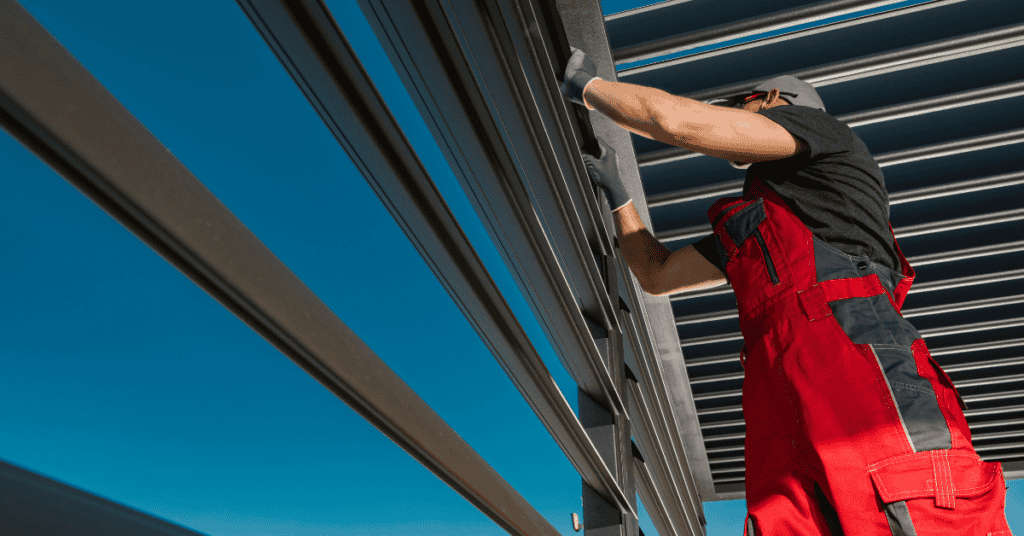
You’ve completed your findings, and you’re now ready to install your pergola. We’ll see what you should do in a simple process, but before then, it is vital to know the parts of a pergola so you can easily build it.
Parts of a Pergola
There are four main parts of a simple pergola structure with less shade. These parts are:
- 6×6 posts that serve as the frames for the structure
- Double beams or boards attach to the frame and serve as a platform for the purlins
- Purlins or rafters sit on the beams going across the double beams put in opposite corners
- Stringers sit on top of the purlins and provide additional shade in the space
How to Install Your Pergola?
Depending on the material you choose, the installation process may vary slightly; however, they all follow the same principle. To make this easier, we’ve decided to use wood, which is the most popular material. Bear in mind that you may need the permission of your local building control as a pergola is considered a building in most places.
1. Measure
Remember, we’re making a 10×10 pergola base with a 12×12 roof. This means we need to measure 10 meters by 10 meters for the 6×6 posts which will be serving as frames. Using a post digger or an auger, dig holes for the four posts at the end of your measured distances.
Bear in mind that you may need to read the building rules to know the permissible depth for your posts.
2. Assemble the Posts and Double Beam
It is easier to put together the post and double beam on the ground before mounting the posts. The double beam should go on either side of the posts, with each post at the end with the post 10 meters away from each other. Screw the setup together using bolts and nuts. This way, you have two sets of two posts held together. The double beam should be 2×8 lumbers.
3. Mount the Posts
Put the posts in the holes already dug, then fill them with concrete and allow them to set. Or you can make use of anchors to hold the post firmly. Anchors make it easier to move the structure to a different location.
4. Fit the Rafters
Use 2×6 lumber to make rafters. Make notches on the rafters to fit the double beam tightly. Now fix the rafters on the double beams. The closer they are to each other, the more shade they can provide, so adjust this to your preference. You should know that the closer they are, the more wood will be required to cover the area.
Use bolts to fasten them to the beams from the top of the raster.
5. Fit the Top Stringers
On top of it, all are the stringers that further regulate the shade while making the structure more appealing. You should drill the stringers to the top of the structure going across the rafters. Also, you can adjust the distance between stringers depending on the amount of shade you want.
6. Flooring
You can make different floor designs for your pergola like decks, concrete, slabs, and so much more. This depends on the style you’ll want to accomplish. When it comes to some styles like making concrete floors, you may be better off calling professionals if you have no prior experience.
7. Finish Strong
You want to finish your pergola with the best touch no matter what material you use. You can paint, design, or pressure treat your wood to get the perfect look.
Add furniture into the space; remember to have weather-friendly furniture that wouldn’t get damaged under the rain or fade out under the scorching sun.
Cost of a Pergola Built From Scratch
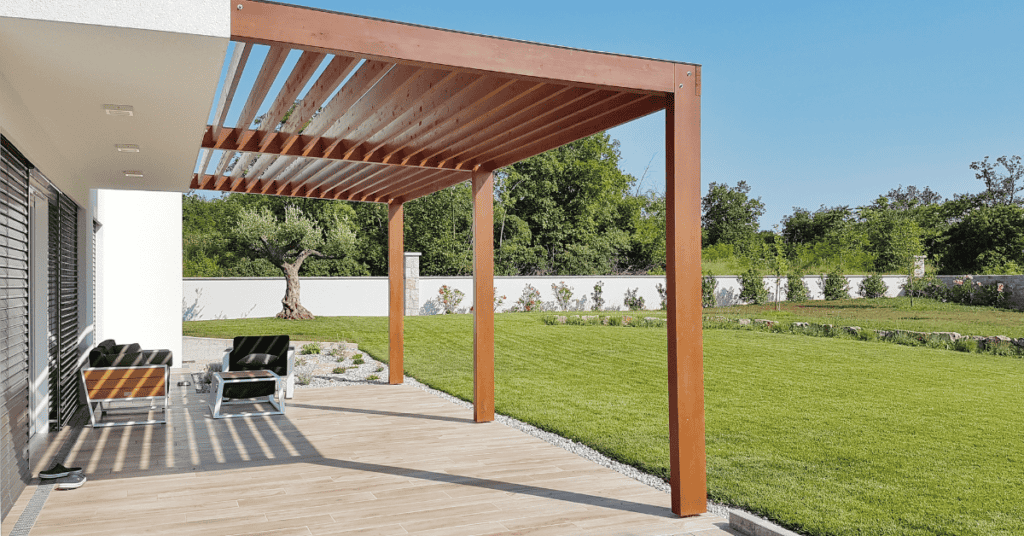
Feeling more adventurous? How about building completely from scratch, no kit, no professionals, just you and this guide, of course. The good thing here is that you can let your creativity out and make any design while also saving a lot on labor costs. It is, however, more stressful and would require more time to complete.
Making a pergola from scratch can cost you as low as $600 for your 10×10 structure. The upward threshold depends on the materials you choose.
Materials like PVC and vinyl are some of the cheapest to make a pergola, while wood, metal, and fiberglass represent some more expensive options. The material you choose will have a significant impact on the cost so you want to consider your budget and the intended style first.
Reasons You May Want a Pergola in Your Backyard
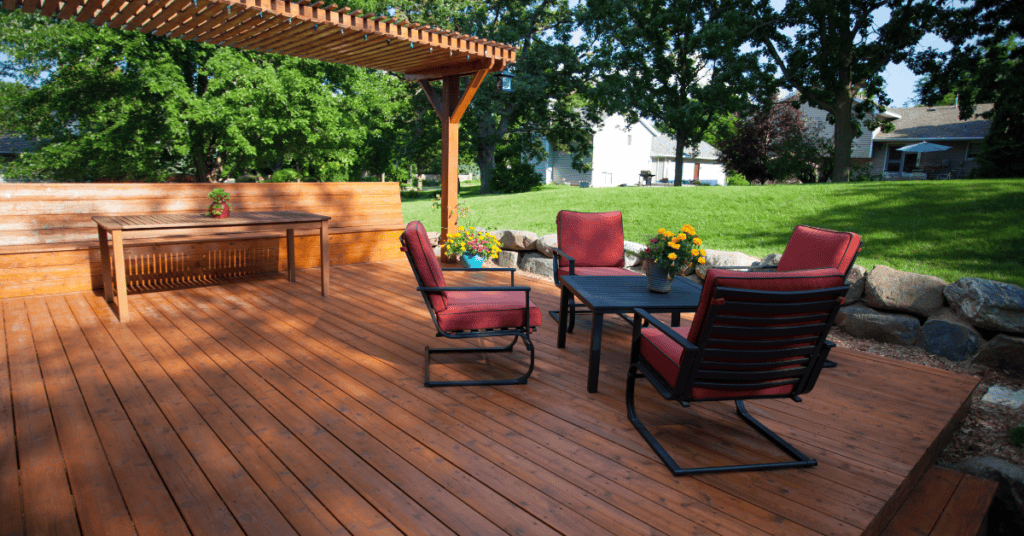
Before we delve right into the process of making a pergola, let’s see some of the reasons you may want a pergola in your backyard.
1. Uses of a Pergola
If you’re not entirely convinced you need a pergola or may not know all a pergola can do for you, sit back as we look at some interesting uses of this structure.
2. Protection Against the Elements of Weather
The main use of a pergola is to provide some sought of cover against harsh weather like a sunny day or when there’s light rain. Although pergolas are usually open structures, they can still provide a little cover.
3. Defined Space for Outdoor Activities
Instead of having visitors loiter around the whole garden, a pergola provides a clear space for outdoor activities. If you’re one to have parties or friends over, a pergola will help with clarity.
4. Aesthetics
When it comes to garden structures, you cannot overestimate the importance of beauty and appeal, and pergolas tick those boxes as it immediately becomes the center of attraction in your space. So if you’re looking to spice up an otherwise dull space, a pergola may just be it for you.
5. Privacy
Even though it is a fairly open structure, it still provides privacy for your conversation and time with family. You can even modify it by having drapes at the sides so you can roll down or up whenever you like.
6. Size of a Pergola
When making any structure, size is one of the first things you consider as it affects a lot of other factors, including the type of materials you can use and cost. For this pergola guide, the size we’ll be considering is a 10×10 structure.
When talking about sizes of structure, the 10×10 here refers to the base, not the roof. The roof will be slightly larger at 12×12 to accommodate the base and have a little more at the sides.
A 10×10 structure is moderately sized and should fit in most garden spaces while also being large enough for the gathering of a couple of people. This common ground is what makes this size quite popular for not only pergolas but for many other outdoor structures.
You May Like to Read: 6 Amazing 12×12 Shed Ideas and Designs
Summary
There’s no straightforward answer to this but a series of simple options. If you want to get your hands dirty and test out your creativity, DIY would be perfect for you. If time and energy are of the essence, you may want to call in a professional.
In the end, DIY will save you a lot in the cost of setting a pergola up while allowing you to try out some of those ideas in your head.

